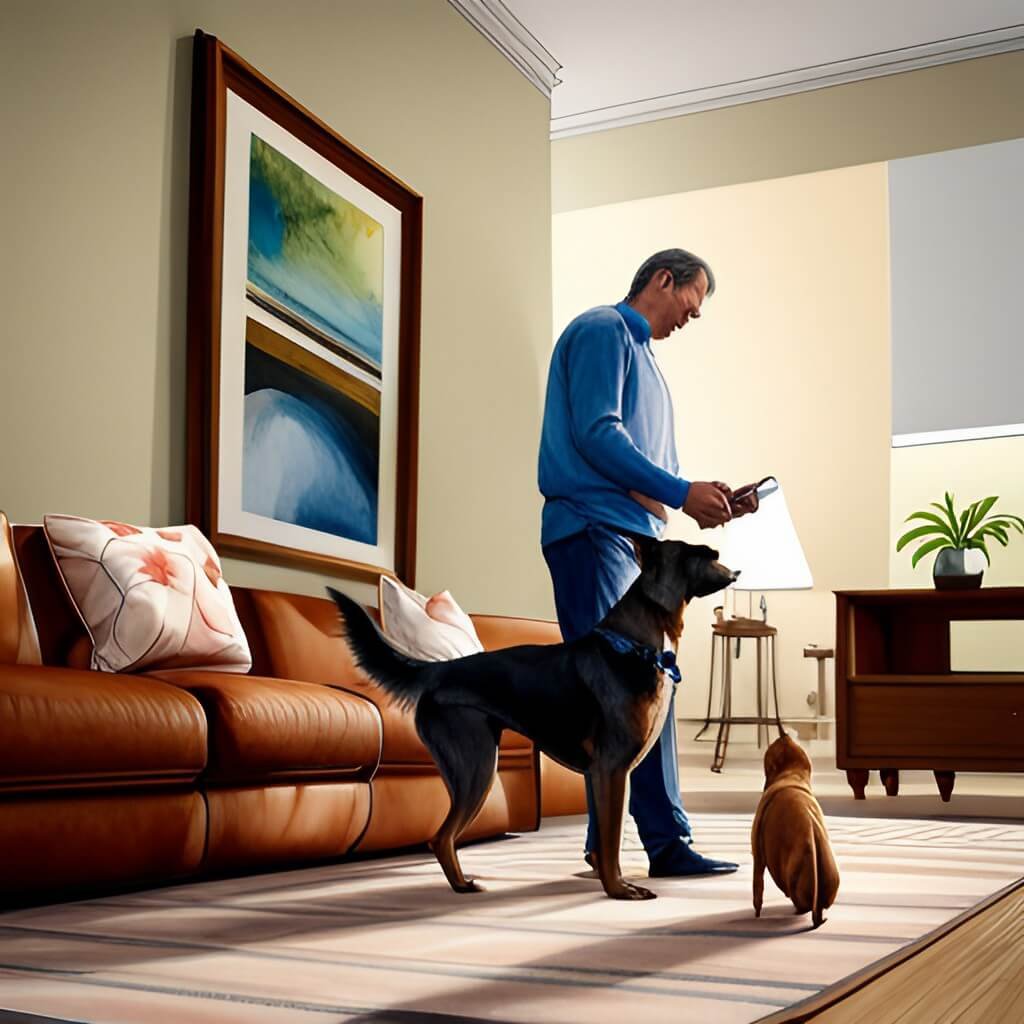People often think of clicker training as a fast and easy way to teach basic obedience commands, such as “sit” or “come,” but it can also quickly shape puppy behavior in ways that establish a productive and happy relationship, right from the start.
“Puppies understand very well and quickly that a click means something good, and that something the puppy did made that click happen,” says Kevin Alexander, a leading clicker training specialist from Kansas City, Kansas.
Kevin once taught an entire litter of 3-week-old Golden Retriever puppies to lift their paws on cue in just a few minutes. “When the puppies figure out that they’re getting clicked for a randomly lifted paw, you see the light bulb go on, as if they’re thinking, ‘Wait a minute, if I do this, that huge creature gives me food. That’s a good thing!’
Clicker Training can be used for much more than marking any single behavior. Mr. Alexander teaches pet owners how to use the clicker to teach incremental moves that can be shaped into desirable behaviors, such as going to a mat, standing nicely for grooming, or any number of fun tricks.
Lifting a paw, for example, can be transformed into a high-five trick, shaped into teaching the puppy to ring a bell when it needs to go outside, or even as an offering of the paw for nail trimming. As tricky as these behaviors may sound, the clicker makes them easy.
“When puppies understand what you want, they start doing things on purpose, making eye contact, and suddenly, these tiny puppies wake up and smell the coffee, and think about the universe in relation to themselves,” Kevin says. “It’s just a wonderful thing for puppies to learn.”
Clicker training is particularly useful for dogs that aren’t traditionally known for their skill at basic obedience. Perfect examples are Hounds, terriers and other traditional non-obedience breeds. These breeds do especially well with the clicker because it gives them a clear reason why they should do something they might not see the reason for otherwise.
Dogs that tend to have a “Why should I do this?” type of attitude really buy into clicker training (although it does work with all breeds). In fact, the best age to bring a clicker into your dog’s life is early, as young as two to three weeks of age.
Clicker Training For Fun & Games (2)
You can teach your puppy some useful and desirable behaviors (not just obedience commands) by using the clicker. Clicker training is probably the simplest and fasted way to teach your puppy neat tricks, fun commands and polite manners.
Of course you need to first familiarize your puppy with the clicker. You do this by loading, or charging, the clicker. This quickly associates the clicker with a treat in the puppy’s mind. Clicker trainers know that this doesn’t take very long. Some puppies get it in just a few clicks.
It can take a puppy a little longer to figure out that its behavior can make the click, but the focus comes right away. Those trainers that have been working with a clicker for some time can take a new puppy that’s never seen the trainer before, and keep it focused for 10 minutes straight.
Peaceful Greetings
Here is one of my personal favorites from clicker trainers around the world. It makes “no-jumping” a fun and rewarding lesson. I call it Peaceful Greetings:
Oh those jumping, joyful puppies! They see you, rush to your side, and hop all over you – how adorable – but what a shame to squelch that happy enthusiasm in a puppy that just wants to say hello! Instead, we suggest that you teach your puppy to avoid jumping on visitors by rewarding the puppy for saying hello peacefully. This exercise is easiest to teach with a partner, or in a group:
1) Put the leash on the puppy. Have one person hold the leash and the clicker while you stand back from the puppy, holding treats.
2) Approach the puppy. If it jumps up, do not make eye contact or say anything. Just back away again and wait a few seconds. Try again. Keep approaching the puppy and backing up if it jumps.
3) Eventually, the puppy will realize that it will have to try something different if it wants you to move toward it. When you step forward and the puppy keeps all four paws on the floor, the person holding the leash clicks, then the person approaching immediately gives a treat and praise.
4) Practice this until the puppy consistently keeps from jumping. Then, try it off the leash.
5) It’s best to do this in groups with children. Each person calls the puppy to him or her, but then ignores the puppy if it jumps, clicking and giving a treat when it stands or sits in expectation of a reward. Puppies usually learn the difference in just one or two training sessions.
Clicker Training For Fun & Games
“To The Mat”
Wouldn’t it be nice if your puppy would go to its mat and lie down nicely on cue? It can happen, and once you’ve taught this behavior you can use it in many ways. For instance, you can place the mat wherever you need the puppy to go – in the car, in a crate or simply away from people who don’t want a puppy jumping on them.
The last clicker training class I went to taught me just how to do this lesson. The trick is to teach puppies that hanging out on the mat is a good thing. Here’s how:
1) First, place the mat on the floor in front of the puppy. You have to be ready to click right away because most puppies will investigate anything new. When the puppy comes to sniff at the mat, click and treat. It’s best if you let your puppy come back to you for the treat, so it can have practice going to the mat again and again.
2) Next, don’t just click for a sniff or the mat. Wait – the puppy should try to figure out what comes next. If the puppy comes to you, ignore it. When the puppy tries something else, such as actually touching the mat with its nose or putting a foot on the mat, click and treat again. Click anything that gets the dog engaged in the game that this particular item on the floor has importance.
3) Gradually click each new step, clicking as the puppy gets closer to the mat, ignoring the puppy as it gets further away. If the puppy isn’t touching the mat, height can help. A dog bed works better than, for example, a flat towel.
You can also lure the puppy toward the mat with a treat, then click when the pup steps on th mat. You want the puppy to understand that you want its feet on the mat. For many puppies, this only takes a few minutes, but some may take several sessions.
4) Once the puppy is standing on the mat, the next step is to ask for a sit. When the dog sits, either on your cue or on its own, click and treat.
5) Finally, attach a cue. Make sure that what the dog is doing is firmly in the dog’s mind before attaching a verbal cue like “mat” or “bed.” Practice until the puppy goes to the mat and sits on cue.








